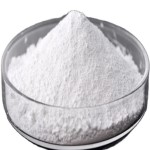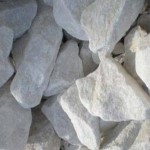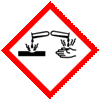Quick Lime Calcium Oxide Powder Lumps SDS of Suppliers Exporters, Manufacturers
Calcium Oxide
CAS Number: 1305-78-8 Quick Lime Powder Lumps USP Reagent FCC Food Grade Suppliers Exporters, Manufacturers


Please visit Main Page of Quick Lime Calcium Oxide Powder Lumps USP Reagent FCC Food Grade Manufacturers.
Calcium Oxide SDS, Safety Data Sheet
MSDS Sheet 09-May-22
Section 1: Chemical Product and Company Identification
Product Name & Other Names: Calcium oxide or Quicklime or Lime.
CAS#: 1305-78-8
EINECS EC Number: 215-138-9
Relevant uses and uses advised against (if any): Industrial use only.
Supplier: As per letterhead.
Section 2: Hazards Identification
GHS, Globally Harmonized System Classification in accordance with 29 CFR 1910
Classification according to Regulation (EC) No 1272/2008
Skin corrosion/irritation Category 2, H315
Serious eye damage/eye irritation Category 1, H318
Specific target organ toxicity, single exposure; Respiratory tract irritation Category 3, H335
Labeling according to GHS & Regulation (EC) No 1272/2008
GHS Label Elements  Corrosive |
Signal Words: Danger
Hazard Statements:
H315: Causes skin irritation.
H318: Causes serious eye damage.
H335: May cause respiratory irritation.
Precautionary Statements:
P260: Do not breathe dust/fume/gas/mist/vapors/spray.
P262: Do not get in eyes, on skin, or on clothing.
P264: Wash … thoroughly after handling.
P270: Do not eat, drink, or smoke when using this product.
P280: Wear protective gloves/protective clothing/eye protection/face protection.
P330: Rinse mouth.
P360: Rinse immediately contaminated clothing and skin with plenty of water before removing clothes.
P362: Take off contaminated clothing and wash before reuse.
P301+312: IF SWALLOWED: Call a POISON CENTER or doctor/physician if you feel unwell.
P302+352: IF ON SKIN: Wash with soap and water.
P305+351+338: IF IN EYES: Rinse cautiously with water for several minutes. Remove contact lenses if present and easy to do – continue rinsing.
P314: Get Medical advice/attention if you feel unwell.
P332+313: If skin irritation occurs: Get medical advice/attention.
P337+P313: If eye irritation persists: Get medical advice/ attention.
Section 3: Composition and Information on Ingredients
Product Name & Other Names: Calcium oxide or Quicklime or Lime.
CAS#: 1305-78-8
EINECS EC Number: 215-138-9
Section 4: First Aid Measures
Eye Contact: Check for and remove any contact lenses. In case of contact with Calcium oxide or Quick Lime, immediately flush eyes with plenty of water for at least 15 minutes. Cold water may be used. Get medical attention immediately.
Skin Contact: In case of contact, immediately flush skin with plenty of water for at least 15 minutes while removing contaminated clothing and shoes. Cover the irritated skin with an emollient. Wash clothing before reuse. Get medical attention immediately.
Serious Skin Contact: Wash with a disinfectant soap and cover the contaminated skin with an anti-bacterial cream. Seek medical attention.
Inhalation: If inhaled, remove to fresh air. If not breathing, give artificial respiration. If breathing is difficult, give oxygen. Get medical attention.
Serious Inhalation: Evacuate the victim to a safe area as soon as possible. Loosen tight clothing such as a collar, tie, belt, or waistband. If breathing is difficult, administer oxygen. If the victim is not breathing, perform mouth-to-mouth resuscitation.
Ingestion: Do NOT induce vomiting unless directed to do so by medical personnel. Never give anything by mouth to an unconscious person. If copious quantities of this material are swallowed, call a physician immediately. Loosen tight clothing such as a collar, tie, belt, or waistband.
Section 5: Fire and Explosion Data
Flammability of the Product: Non-flammable.
Fire Extinguishing Media: Use water spray, alcohol-resistant foam, dry chemical, or carbon dioxide. Use means suitable for extinguishing surrounding fire.
Special Remarks on Fire Hazards: Chlorine Trifluoride reacts violently with calcium oxide producing flame.
Extinguishing Media Not recommended: Avoid using solid water jet as it may scatter the fire.
Special Information: In the event of a fire, wear full protective clothing and NIOSH-approved self-contained breathing apparatus with full face piece operated in the pressure demand or other positive pressure mode. At elevated temperatures under fire conditions, it may produce toxic or irritating fumes. Fire-extinguishing work is done from the windward and the suitable fire-extinguishing method according to the surrounding situation is used.
Section 6: Accidental Release Measures
Personal precautions, protective equipment, and emergency procedures: Ventilate area of leak or spill. Avoid breathing dust/fumes/gas/mist/vapors/spray. Use individual protective equipment (waterproof boots, suitable protective clothing, safety glasses, etc.). Do not approach facing the wind.
Environmental precautions: Do not let the product enter drains, soil, or water sources.
Methods and materials used for containment cleanup procedures and Storage: Corrosive solid. Stop leak if without risk. Contain spilled material. Cover with an inert, non-combustible absorbent material, (e.g., sand, earth, diatomaceous earth, vermiculite). Vacuum or sweep-up and remove to an approved disposal container. Finish cleaning by spreading water on the contaminated surface and allow to evacuate as per law. Residues can be neutralized with a dilute solution of acetic acid.
Section 7: Handling and Storage
Precautions for safe handling: Never add water to this product. Apply according to good manufacturing and industrial hygiene practices. Ensure proper ventilation. In case of insufficient ventilation, wear suitable respiratory equipment. Wash thoroughly after handling. Do not drink, eat, or smoke while handling. Avoid contact with skin, eyes, and clothing. Minimize dust generation. Avoid breathing dust/fumes/gas/mist/vapors/spray. Use individual protective equipment (waterproof boots, suitable protective clothing, safety glasses, etc.).
Conditions for safe storage, including any incompatibilities: Store in cool, dry, and ventilated area away from heat sources and protected from sunlight in tightly closed original container. Keep air contact to a minimum. Store protected from heat, sparks and ignition sources and incompatible materials. Do not store with incompatible materials like organic materials, acids, moisture.
Section 8: Exposure Controls/Personal Protection
Engineering Controls: Use process enclosures, local exhaust ventilation, or other engineering controls to keep airborne levels below recommended exposure limits. If user operations generate dust, fume, or mist, use ventilation to keep exposure to airborne contaminants below the exposure limit.
Exposure Limits:
TWA: 2 (mg/m3) from ACGIH (TLV) [United States]
TWA: 2 (mg/m3) [Canada]
TWA: 5 (mg/m3) from OSHA (PEL).
Ventilation System: A system of local and/or general exhaust is recommended to keep employee exposures as low as possible.
Personal Respirators (NIOSH Approved): For conditions of use where exposure to dust or mist is apparent and engineering controls are not feasible, a particulate respirator may be worn.
Skin Protection: Wear protective gloves and clean body-covering clothing.
Eye Protection: Use chemical safety goggles and/or full-face shield where dusting or splashing of solutions is possible. Maintain eye wash fountain and quick-drench facilities in work area.
Other Control Measures: Maintain good housekeeping in work area. Handle in accordance with good industrial hygiene and safety practice.
Section 9: Physical and Chemical Properties
Appearance: White to off-white solid. Powder or lumps.
Odor: It is odorless.
Odor threshold: Not applicable.
Taste: Bitter. It can damage mouth tissues.
pH (1% solution/water): 10
Relative density: around 3.33
Boiling Point: 2850C (5162F)
Melting Point: 2572C (4661.6F)
Flash point: No data found.
Auto-ignition temperature: No data found.
Decomposition temperature: No data found.
Upper/lower flammability or explosive limits: No data found.
Vapor pressure: No data found.
Vapor density: No data found.
Evaporation rate: No data found.
Flammability (solid, gas): No data found.
Partition coefficient: n-octanol/water: No data found.
Solubility(ies): Soluble in acids, glycerol, sugar solution. Practically insoluble in alcohol. Very slightly soluble in cold water, hot water.
Viscosity: No data found.
Chemical Formula: CaO
Molecular Weight: 56.08
Section 10: Stability and Reactivity Data
Stability: The product is stable. Avoid exposure to Air and Moisture.
Conditions of Instability: Incompatible materials
Incompatibility with various substances: Reactive with organic materials, acids, moisture.
Corrosivity: Not available.
Special Remarks on Reactivity:
Absorbs CO2 from air. Reacts with fluorine to evolve much heat and some light. Reacts with water. Addition of water to Quicklime has generated temperatures as high as 800 C. Some reports describe the reaction as violent. In water, calcium oxide forms calcium hydroxide generating a large quantity of heat. Ignition of sulfur, gunpowder, wood, and straw by heat of Quicklime-water reaction has been reported. Liquid hydrofluoric acid and calcium oxide react very violently. Calcium reacts with phosphorous pentoxide extremely violently when initiated by local heating. It becomes incandescent when heated to near its melting point (2500 C). Quick Lime when stored against brick wall is known to push off the wall.
Polymerization: Will not occur.
Section 11: Toxicological Information
Toxicity to Animals:
LD50: No data found.
LC50: No data found.
Carcinogenicity: No component of this product present at levels greater than or equal to 0.1% is identified as probable, possible, or confirmed human carcinogen by IARC.
Mutagenic Effects: No data found.
Teratogenic Effects: No data found.
Developmental Toxicity: No data found.
Reproductive Effects: No data found.
Section 12: Ecological Information
Toxicity to fish: LC50 - Cyprinus carpio (Carp) - 1.070 mg/l - 96 h
Toxicity of the Products of Biodegradation: The product itself and its products of degradation are not toxic.
Results of PBT and vPvB assessment: This substance/mixture contains no components considered to be either persistent, bioaccumulative and toxic (PBT), or very persistent and very bioaccumulative (vPvB) at levels of 0.1% or higher.
Section 13: Disposal Considerations
Waste Disposal: Waste must be disposed of in accordance with federal, state, and local environmental control regulations.
Section 14: Transport Information
DOT USA, TDG Canada Classification:
Class 8: Corrosive material
Identification: Calcium Oxide UNNA: 1910 PG: III
ADR/RID Europe: Not controlled
IMDG/IMO: Not controlled
IATA/ICAO:
Un Number 1910
Class 8: Corrosive material
Identification: Calcium Oxide UNNA: 1910 PG: III.
Section 15: Other Regulatory Information
USA:
California Proposition 65: Not listed.
SARA 311/312 Hazards: See section 2.
Section 16: Other Information
Disclaimer:*************************
Our company provides this MSDS information sheet contained herein in good faith but makes no representation as to its comprehensiveness or accuracy. This SDS sheet is intended only as a guide to the appropriate precautionary handling of the material by a professionally trained person using this product. Individuals receiving the information must exercise their independent judgment in determining its appropriateness for a particular purpose.
*************************
Please visit Technical Data Sheet of Quick Lime Calcium Oxide Powder Lumps USP Reagent FCC Food Grade Suppliers.
Hydrated Lime Calcium Hydroxide CAS Number 1305-62-0 & Quick Lime Calcium Oxide CAS Number 1305-78-8 Supplier Exporter, Manufacturer:
Annie Chemie P Ltd
Mumbai 4000010, INDIA
With Agents and offices in UAE, USA, Europe.
e-mail: info@anniechemie.com
Copyright and Usual Disclaimer is Applicable.
May 30, 2025
Exporters to USA, Canada, UK, Europe, UAE, Nigeria, Algeria, Turkey, Mexico, Brazil, Chile, Argentina, Australia, Dubai etc.
Perfection is made up of small things and that is a big thing.
